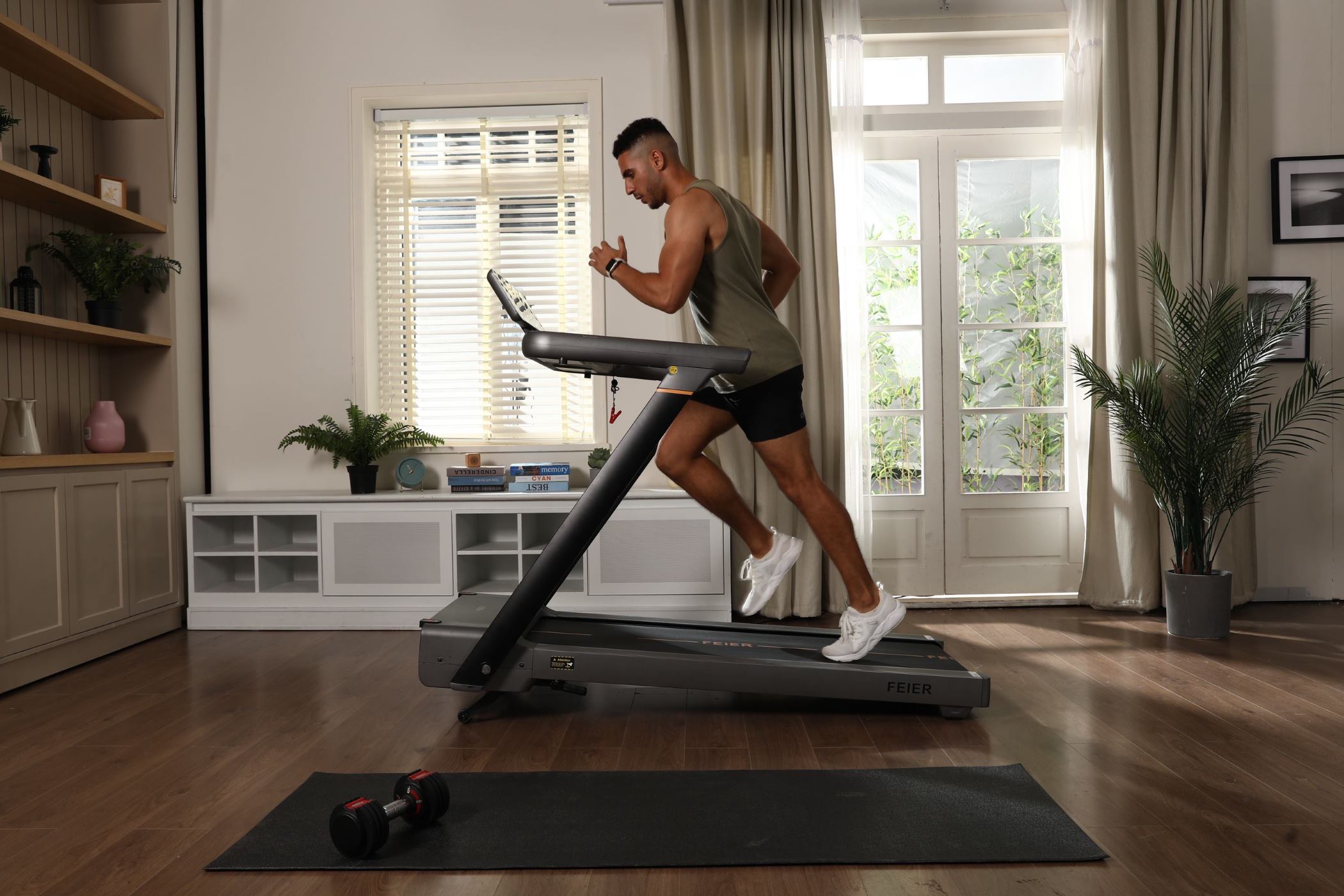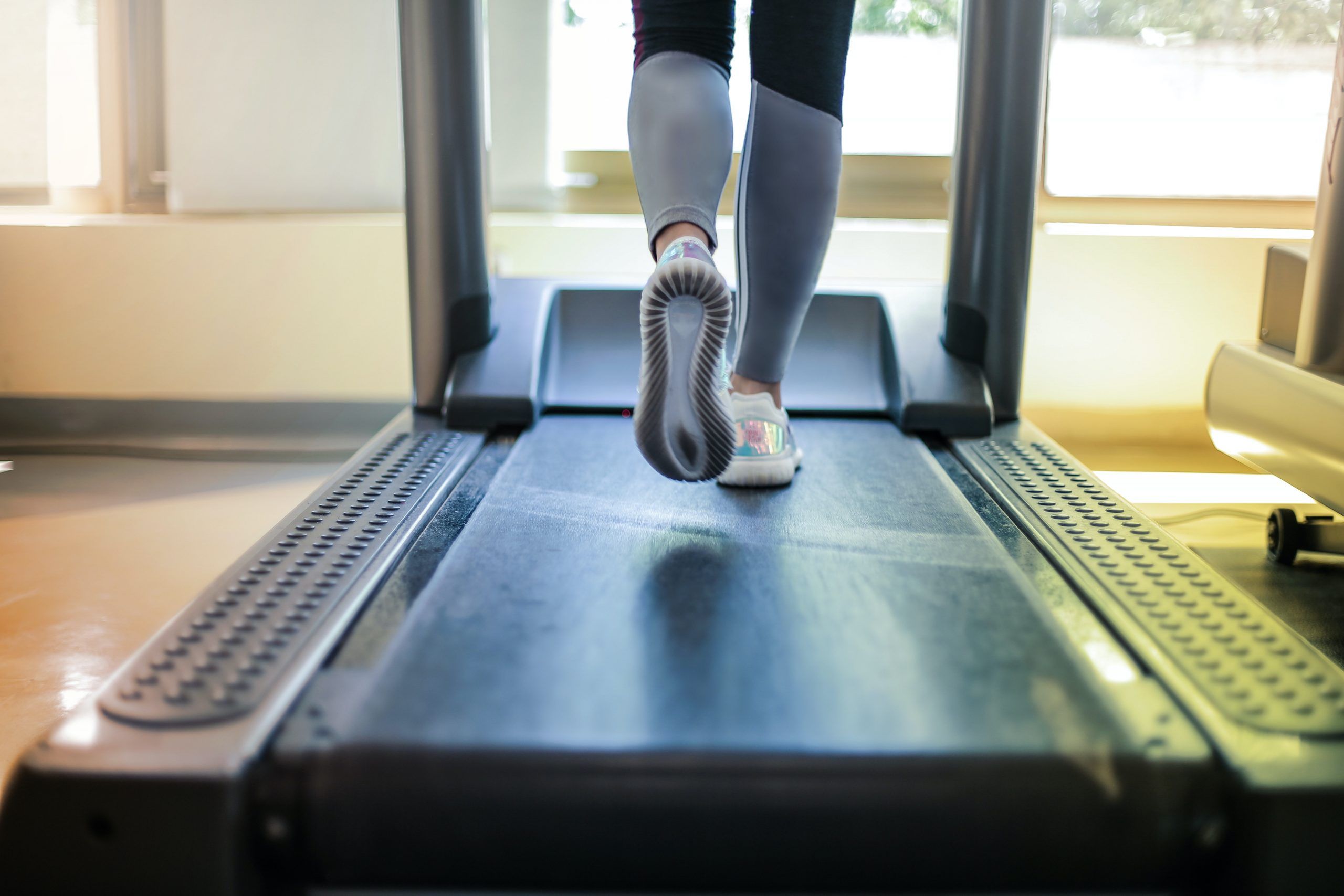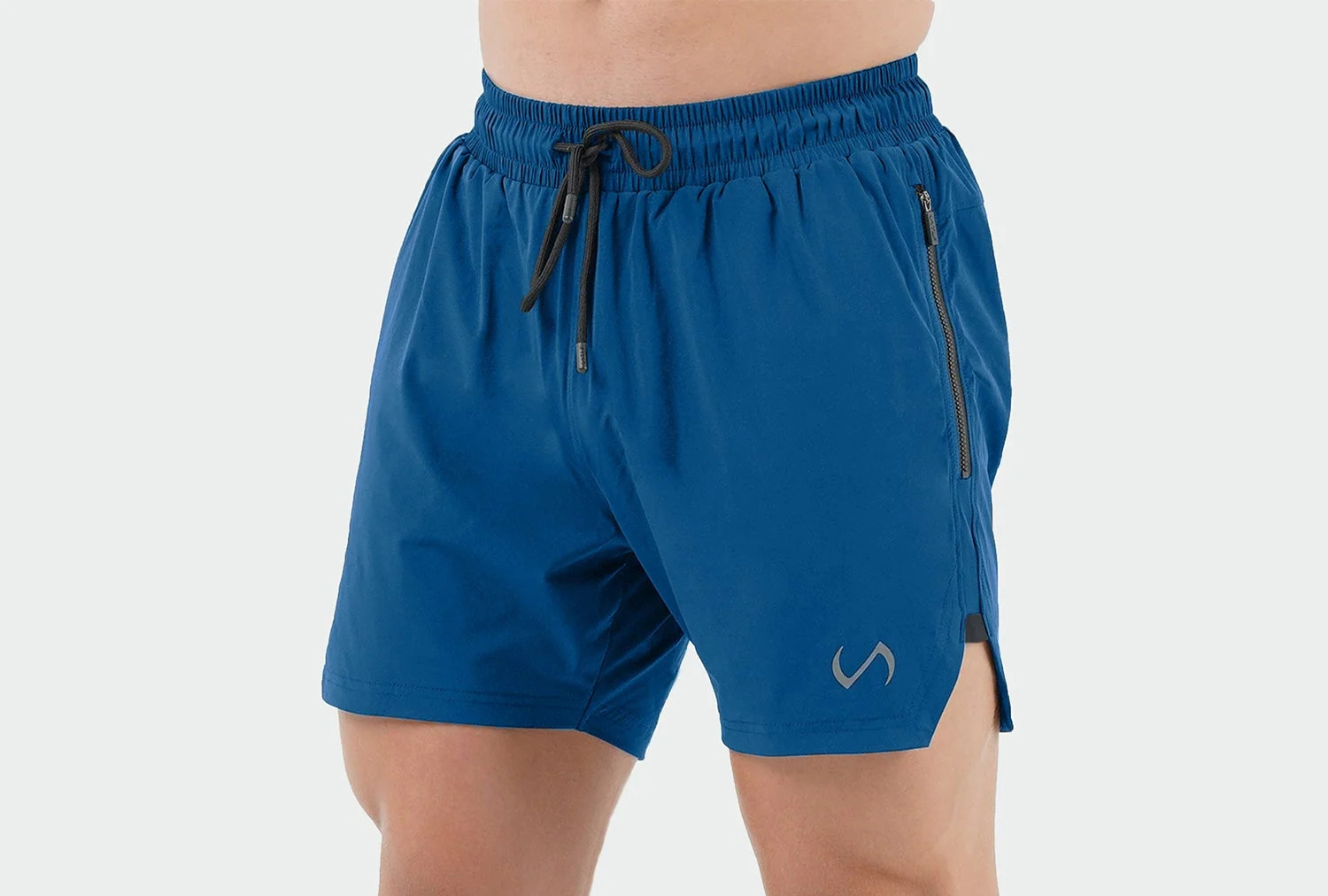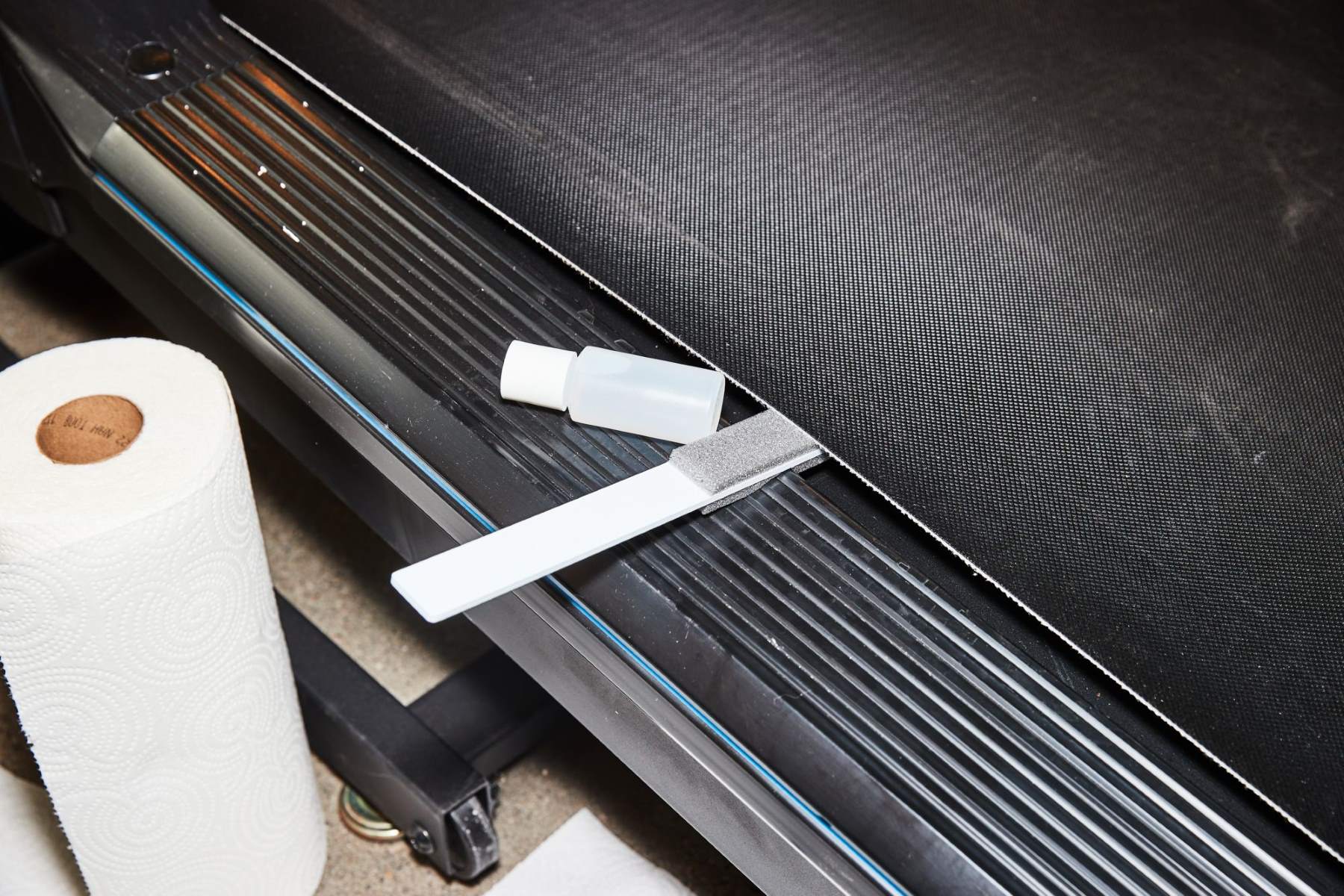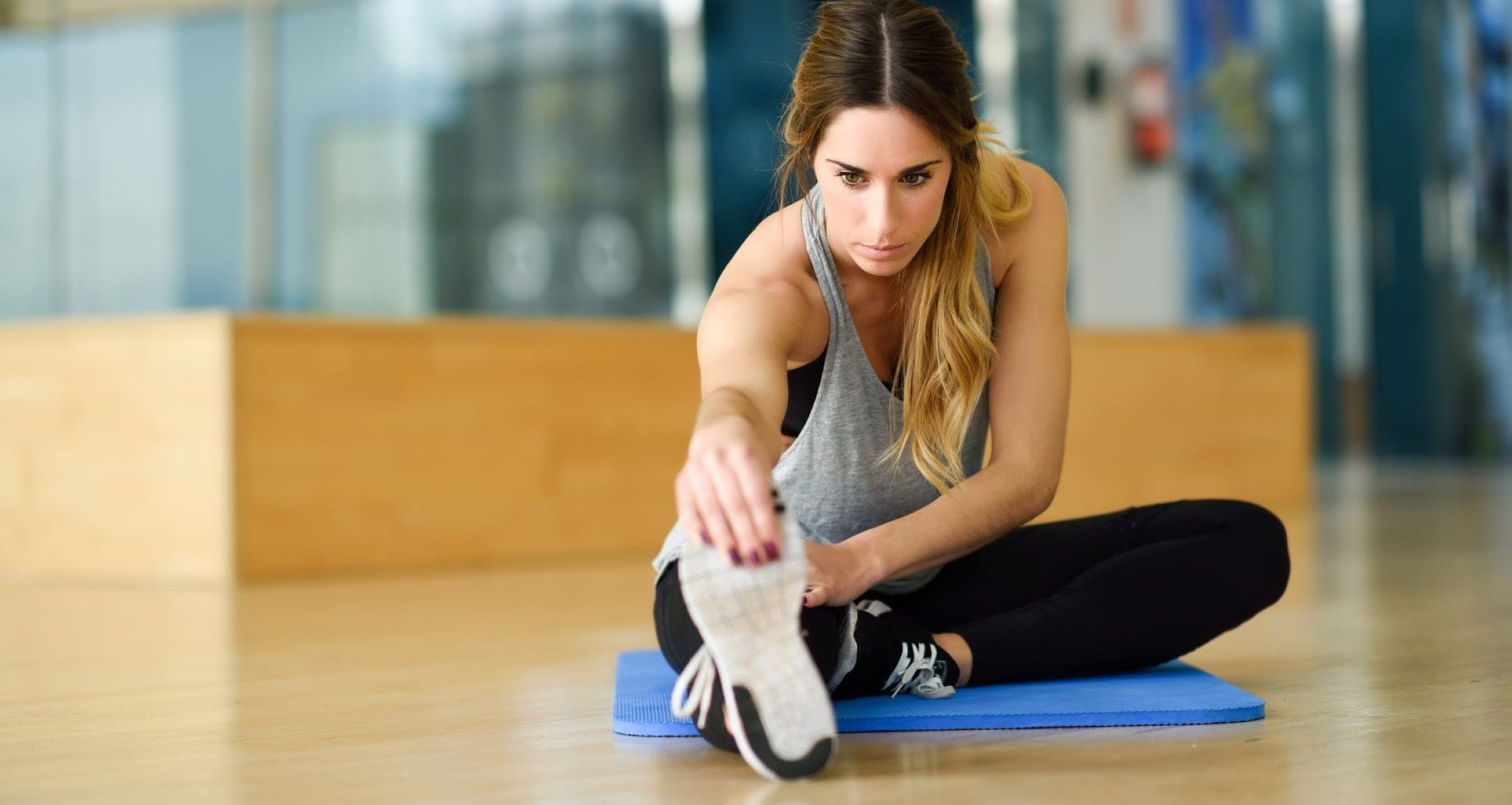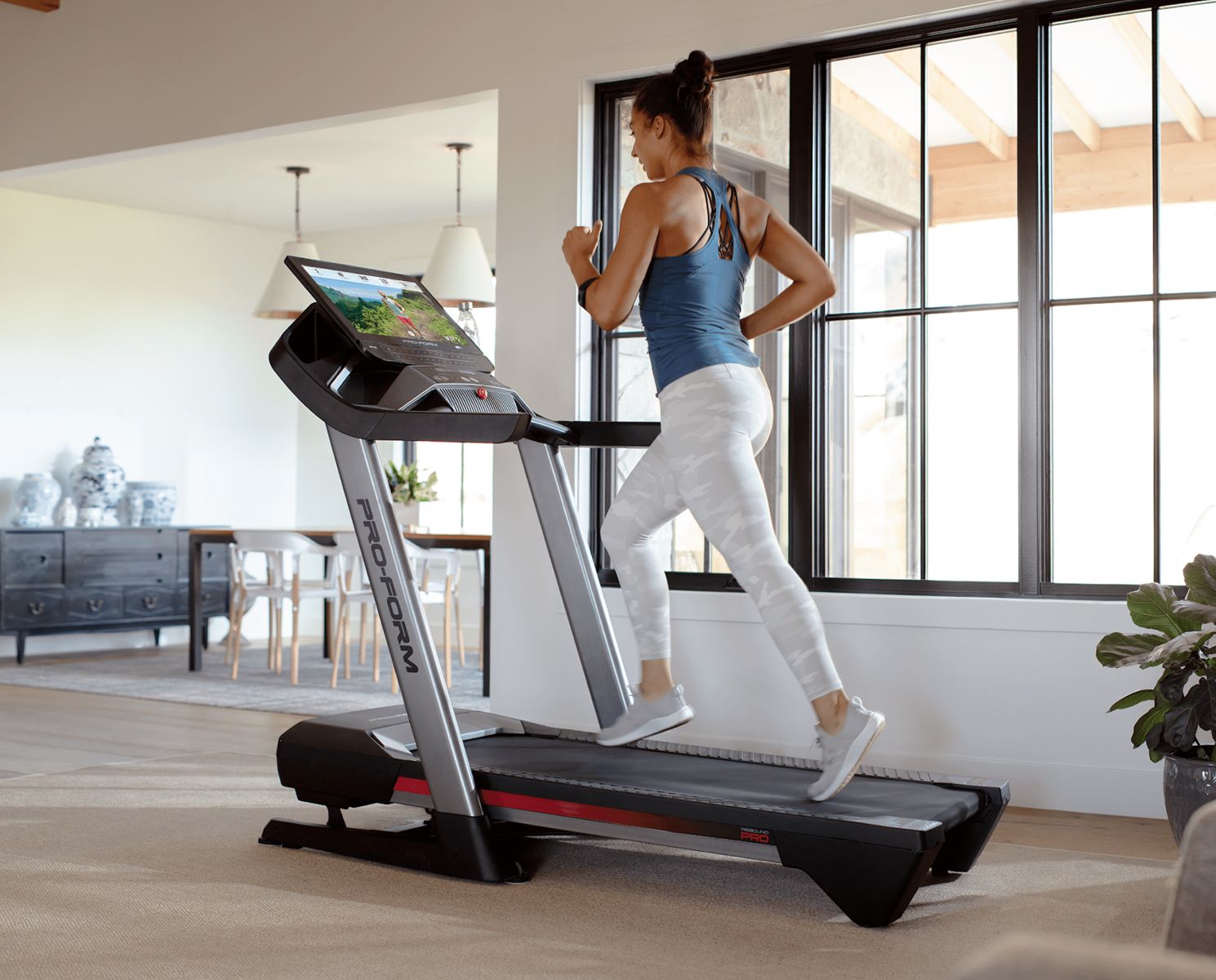Home>Misc>Featured>Why Do My Knees Hurt When Running On The Treadmill
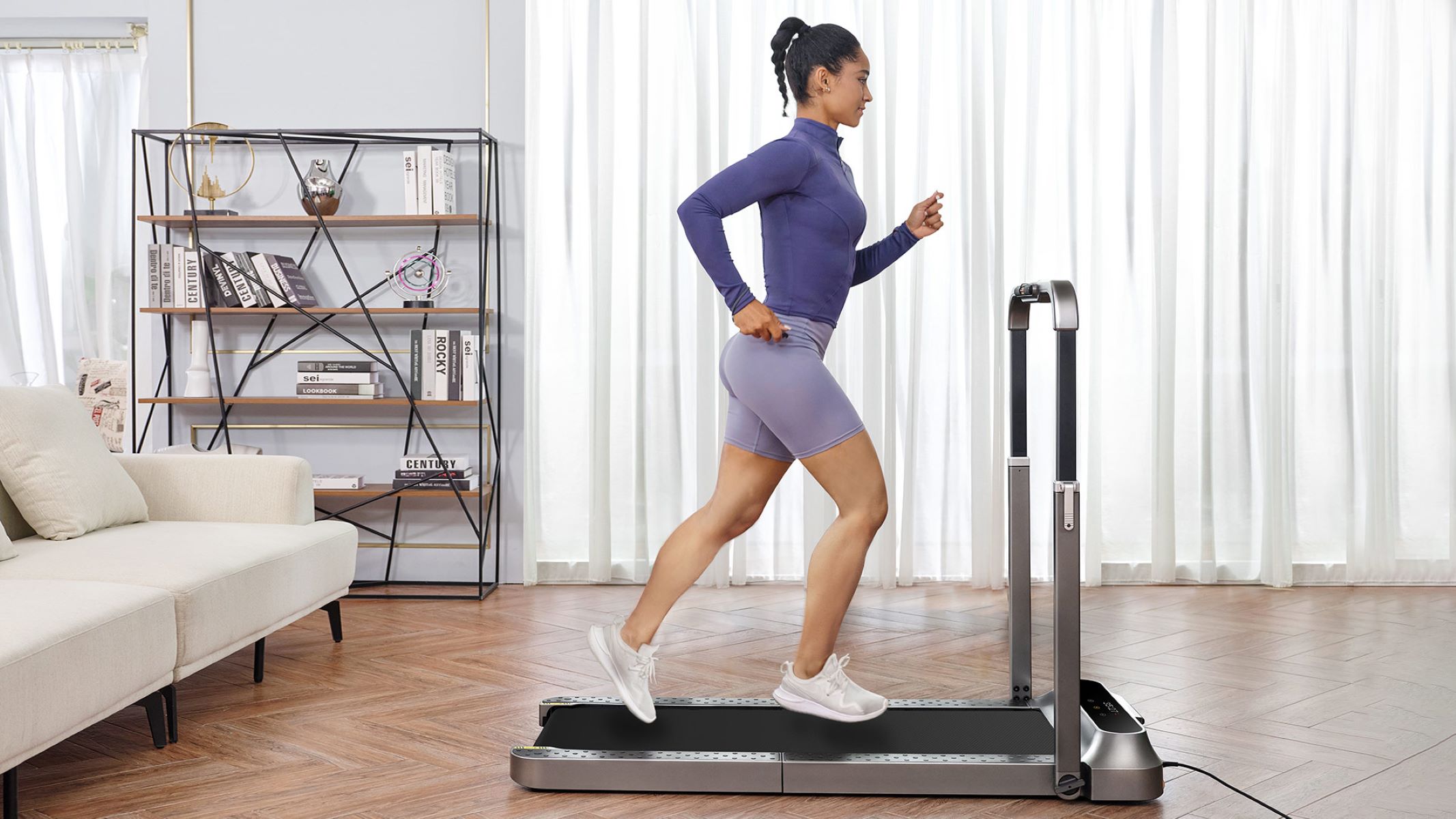

Featured
Why Do My Knees Hurt When Running On The Treadmill
Modified: January 22, 2024
Get relief for your knees with our featured tips for running on the treadmill. Say goodbye to knee pain and enjoy your workout!
Introduction
Running on a treadmill is a popular form of exercise for many people. It allows you to control your pace, incline, and distance, making it a convenient option for those who want to stay active indoors. However, some individuals may experience knee pain when running on a treadmill, which can be quite frustrating and discouraging.
Knee pain can be caused by a variety of factors, including poor running form, inadequate warm-up, or even wearing improper footwear. It is essential to address the underlying causes of knee pain to prevent further discomfort and potential injuries.
In this article, we will explore the common causes of knee pain when running on a treadmill and provide you with practical tips to alleviate and prevent knee pain. Whether you are a beginner or an experienced runner, implementing these strategies can help you enjoy a pain-free treadmill workout and continue on your fitness journey.
It is important to note that while the information provided here can be beneficial, it is not a substitute for professional medical advice. If you have persistent or severe knee pain, it is always recommended to consult with a healthcare professional for an accurate diagnosis and appropriate treatment plan.
Common Causes of Knee Pain When Running on a Treadmill
Knee pain while running on a treadmill can stem from several factors. Understanding these common causes can help you identify the root of your discomfort and take the necessary steps to alleviate it:
- Poor running form: Incorrect running form can put excessive strain on your knees, leading to pain and discomfort. Some common form mistakes include overstriding, landing with a heavy heel strike, or running with your knees collapsing inwards. These issues can cause misalignment and increase the stress on your knees.
- Inadequate warm-up: Skipping or insufficiently warming up your muscles before a treadmill run can contribute to knee pain. Without a proper warm-up, your muscles may be tight and less flexible, leading to increased stress on your knees. Always take the time to perform dynamic stretches and light cardio exercises to prepare your body for the workout.
- Weak muscles: Weak muscles in the hips, glutes, and thighs can lead to poor knee stability and alignment. When these muscles are not strong enough to support your body weight during running, your knees can end up taking on excess stress. Strengthening these muscles through specific exercises can alleviate knee pain.
- Improper footwear: Running in worn-out or ill-fitting shoes can impact your running mechanics and contribute to knee pain. Shoes that lack proper cushioning or do not provide adequate support can lead to increased impact on your knees. It is important to choose running shoes that suit your foot type and provide the necessary cushioning and stability.
- Overtraining: Pushing your body too hard or increasing the intensity or duration of your treadmill runs too quickly can lead to overuse injuries, including knee pain. Giving your body enough time to adapt and recover between workouts is essential for preventing injuries and maintaining overall joint health.
Identifying the specific cause or combination of causes for your knee pain when running on a treadmill is crucial for finding an effective solution. By addressing the underlying issues, you can mitigate the discomfort and enjoy a more enjoyable, pain-free running experience.
Proper Running Form and Technique
Proper running form and technique are essential for preventing knee pain when running on a treadmill. Here are some key tips to help you maintain good form:
- Posture: Keep your posture upright with your shoulders relaxed and your core engaged. Avoid leaning too far forward or backward, as this can put undue stress on your knees.
- Foot strike: Aim for a midfoot or forefoot strike when landing on the treadmill. Striking with your heel can increase the impact on your knees. Ensure that your foot lands directly underneath your body, rather than reaching out with a long stride.
- Cadence: Maintain an optimal cadence of around 170-180 steps per minute. This higher cadence helps reduce the impact on your knees and promotes a more efficient running style.
- Arm swing: Allow your arms to swing naturally. They should be bent at approximately 90 degrees and move forward and backward in sync with your running motion. Avoid crossing your arms in front of your body, as this can lead to unnecessary strain on your shoulders and upper back.
- Knee alignment: Pay attention to your knee alignment while running. Avoid allowing your knees to collapse inward or outward, as this can lead to stress and discomfort in the knee joint. Keep your knees in line with your feet, pointing forward.
- Breathing: Practice deep, controlled breathing while running. This helps provide oxygen to your muscles and prevents unnecessary tension in your body, including your knees.
It can take time to adjust and perfect your running form, so be patient with yourself. It can also be helpful to have someone observe your running technique or consider consulting a running coach for guidance and feedback. Maintaining proper form not only reduces the risk of knee pain but also enhances your overall running efficiency.
Importance of Warm-Up and Cool-Down
Warm-up and cool-down exercises are often overlooked but play a crucial role in preventing knee pain when running on a treadmill. Here’s why these pre and post-workout routines are essential:
1. Warm-up: A proper warm-up prepares your body for the upcoming exercise by increasing blood flow to your muscles and joints. This helps loosen up tight muscles and improves their flexibility. Before hopping onto the treadmill, spend at least 5-10 minutes performing dynamic stretches, such as leg swings and walking lunges. Gradually increase your heart rate with some light cardio exercises, like jogging or jumping jacks. A well-executed warm-up reduces the risk of knee pain and injury during your treadmill run.
2. Cool-down: After completing your treadmill workout, do not skip the cool-down phase. Cooling down gradually reduces your heart rate, helps prevent muscle soreness, and allows for a smoother transition to a resting state. Spend 5-10 minutes engaging in low-intensity exercises such as brisk walking or gentle jogging. Follow it up with static stretching, focusing on major muscle groups like the quadriceps, hamstrings, and calves. This will aid in muscle recovery and prevent any potential tightness or stiffness that could contribute to knee pain.
By incorporating both warm-up and cool-down exercises into your treadmill routine, you are giving your body the necessary preparation and recovery time it needs. This promotes better blood circulation, reduces the risk of muscle imbalances, and enhances flexibility, all of which can contribute to a healthier and pain-free running experience.
Stretching Exercises for Knee Pain Relief
Stretching is an essential component of any knee pain relief routine when running on a treadmill. By incorporating these stretching exercises into your workout regimen, you can help alleviate tightness, improve flexibility, and reduce knee pain:
- Quadriceps stretch: Stand near a wall or hold onto a stable surface for balance. Bend one knee and grab onto your ankle, bringing your heel towards your glute. Hold this position for 20-30 seconds and repeat on the other leg. This stretch targets the front of your thigh, including the quadriceps muscles.
- Hamstring stretch: Sit on the edge of a chair or bench, with one foot flat on the ground and the other leg extended straight in front of you. Lean forward from your hips, reaching towards your toes while keeping your back straight. Hold the stretch for 20-30 seconds, feeling the stretch in the back of your thigh. Switch legs and repeat.
- Calf stretch: Stand facing a wall and place your hands on the wall at shoulder height. Take a step back with one leg, keeping it straight and heel grounded. Lean forward into the wall, feeling a stretch in your calf muscle. Hold for 20-30 seconds and switch legs.
- IT band stretch: Stand near a wall or hold onto a stable surface with one hand. Cross one foot over the other and lean to the side, away from the crossed leg. You should feel a stretch along the outer side of your thigh and hip. Hold for 20-30 seconds and repeat on the other side.
- Hip flexor stretch: Stand in a lunge position with one foot in front of the other. Gently lower your back knee towards the floor while keeping your front knee directly above your ankle. You should feel a stretch in the front of your hip and thigh. Hold for 20-30 seconds and switch legs.
Perform these stretches after your treadmill workout, when your muscles are warm. Hold each stretch for a sufficient amount of time, avoiding any bouncing or jerking movements. Remember to breathe deeply and focus on relaxing into each stretch.
Stretching can help reduce muscle imbalances, improve joint range of motion, and decrease knee pain associated with running on a treadmill. However, it is essential to listen to your body and avoid any stretches that exacerbate or cause pain. If you have any underlying knee conditions or persistent pain, consult with a healthcare professional or a physical therapist for personalized guidance.
Strengthening Exercises for Knee Stability
Strengthening the muscles surrounding your knees is crucial for improving stability and reducing knee pain when running on a treadmill. Here are some effective exercises that target these muscles:
- Quadriceps strengthening: One of the best exercises for quadriceps strength is the squat. Stand with your feet shoulder-width apart and slowly lower your body as if you’re sitting back into a chair. Keep your back straight and your knees aligned with your toes. Return to the starting position and repeat for multiple reps. You can also try variations like split squats or lunges to target the quadriceps.
- Hamstring strengthening: Deadlifts are an excellent exercise for strengthening the hamstrings. Stand with your feet hip-width apart, holding a dumbbell or kettlebell with both hands in front of your thighs. Hinge at the hips, keeping your back straight, and slowly lower the weight towards the ground. Engage your hamstrings and glutes to return to a standing position. Start with lighter weights and gradually increase as you become more comfortable with the exercise.
- Glute strengthening: Strong glute muscles help stabilize the hips and knees. Bridge exercises are beneficial for activating the glutes. Lie on your back with your knees bent and feet flat on the floor. Lift your hips off the ground, squeezing your glutes, and hold for a few seconds before lowering back down. You can progress to single-leg bridges for an added challenge.
- Calf strengthening: Calf raises are effective for strengthening the calf muscles, which play a role in knee stability. Stand with your feet hip-width apart and rise onto your toes, lifting your heels off the floor. Hold for a second at the top, then lower back down. Repeat for multiple reps.
- Hip strengthening: The clamshell exercise targets the hip abductor muscles. Lie on your side with your knees bent and feet together. Keeping your feet together, lift your top knee as high as you comfortably can while maintaining control and without rotating your hips. Hold for a moment and slowly lower. Repeat on both sides.
It is important to start with lighter weights or fewer repetitions and gradually increase the intensity as your strength improves. Consistency is key when it comes to strengthening exercises, so aim to incorporate them into your fitness routine regularly.
Remember to listen to your body and stop any exercise that causes pain or discomfort. If you have any existing knee conditions or concerns, consult with a healthcare professional or a physical therapist for guidance on appropriate exercises for your specific needs.
Choosing the Right Footwear for Treadmill Running
Wearing the correct footwear is essential for preventing knee pain when running on a treadmill. The right shoes provide proper cushioning, support, and stability, reducing the impact on your knees. Here are some factors to consider when choosing footwear for treadmill running:
- Cushioning: Look for shoes with ample cushioning in the midsole to absorb the shock from each footstrike. This helps reduce the stress on your knees and joints. However, it’s important to strike a balance – shoes that are too cushioned may sacrifice stability.
- Fit: Make sure the shoes fit properly, with enough room in the toe box for your toes to move comfortably. Your shoes should not be too tight or too loose, as this can cause discomfort and affect your running form.
- Arch support: Consider your foot arch type when selecting shoes. Those with high arches may require shoes with more arch support, while those with flat feet may benefit from shoes with built-in stability features.
- Stability: Look for shoes that provide stability, especially if you overpronate (your foot rolls inward excessively) or underpronate (your foot doesn’t roll inward enough). Shoes with features like medial posts or added support can help address these gait issues.
- Flexibility: Opt for shoes that offer a moderate level of flexibility. They should bend at the forefoot but provide enough support through the midfoot and heel. Too much or too little flexibility can affect your running mechanics and potentially lead to knee pain.
- Quality and durability: Choose shoes from reputable brands known for their quality and durability. Investing in a well-made pair of shoes can ensure they last longer and provide consistent support for your knees.
Remember that everyone’s feet are unique, so what works for someone else may not necessarily work for you. It may be helpful to visit a specialty running store, where the staff can analyze your gait and help you find the right shoes for your specific needs.
Keep in mind that running shoes have a limited lifespan. As the cushioning and support begin to deteriorate over time, they become less effective at protecting your knees. Replace your running shoes every 300-500 miles or when you start noticing signs of excessive wear and tear.
Investing in the right footwear is a vital step in preventing knee pain and ensuring a comfortable and enjoyable treadmill running experience.
Adjusting Treadmill Settings for Lower Impact
Adjusting the settings on your treadmill can help minimize the impact on your knees and reduce the risk of knee pain. Here are some tips to consider when using a treadmill:
- Incline: Running on a flat surface can put more stress on your knees compared to running on an incline. Gradually increase the incline to mimic the feel of running outdoors and reduce the impact on your joints. However, avoid setting the incline too high, as it can put excessive strain on your knees and other joints.
- Pace: Running at a slower pace can help decrease the impact on your knees. If you’re experiencing knee pain, consider reducing your speed to a level that feels comfortable and manageable. Focus on maintaining good form and gradually increase your pace as your knees become stronger and more resilient.
- Shock absorption: Some treadmills offer advanced shock absorption features to cushion your joints. Consider using a treadmill with a cushioned deck or investing in a treadmill mat to help absorb the impact and reduce strain on your knees.
- Foot strike: Focus on your foot strike technique to reduce the impact on your knees. Aim to land softly on your midfoot or forefoot, rather than striking with your heel. This helps distribute the force more evenly throughout your lower body and minimizes the stress on your knees.
- Handrail usage: Avoid relying heavily on the handrails for support while running on a treadmill. Leaning on the handrails can disrupt your natural running form and increase stress on your knees. Instead, engage your core and maintain a balanced posture to promote proper alignment and reduce knee strain.
- Interval training: Consider incorporating interval training into your treadmill workouts. Alternating between periods of higher intensity and lower intensity can not only help improve your cardiovascular fitness but also reduce the repetitive impact on your knees.
By adjusting the settings on your treadmill and focusing on proper running technique, you can significantly decrease the impact on your knees and mitigate the risk of knee pain. Remember to start gradually and listen to your body, making adjustments as needed to create a comfortable and safe running experience.
Preventing Knee Pain in the Future
Prevention is key when it comes to maintaining knee health during treadmill running. Here are some essential tips to help prevent knee pain and injuries in the future:
- Gradual progression: Avoid pushing yourself too hard or increasing the intensity and duration of your treadmill workouts too quickly. Gradually progress your running distance, pace, and incline to allow your body to adapt and strengthen over time.
- Cross-training: Incorporate cross-training activities into your fitness routine to vary the stress placed on your knees. Activities such as swimming, cycling, or strength training can help build overall strength and improve joint stability.
- Proper cooldown: Don’t skip the cool-down phase after your treadmill workout. Cool down exercises help reduce muscle soreness and tightness, promoting better recovery and reducing the risk of knee pain.
- Proper nutrition and hydration: Maintain a balanced diet and stay hydrated to support joint health. Proper nutrition can contribute to healthy cartilage and ligaments, while staying adequately hydrated helps lubricate the joints.
- Listen to your body: Pay attention to any warning signs or discomfort in your knees. If you experience persistent pain or swelling, it’s essential to rest and allow your body to recover. Pushing through pain can worsen the condition and lead to more severe injuries.
- Regular stretching and strengthening: Continue to incorporate stretching and strengthening exercises for your knees and lower body muscles. Regular stretching improves flexibility, while strengthening exercises help maintain joint stability and prevent imbalances.
- Consider orthotics or inserts: If you have specific foot or biomechanical issues, consult a healthcare professional about the possibility of using orthotics or shoe inserts to provide additional support and alignment for your knees.
- Regular check-ups: Get regular check-ups and assessments from a healthcare professional or physical therapist to monitor your knee health and address any potential issues before they escalate.
By following these preventive measures and taking a proactive approach to your knee health, you can minimize the risk of future knee pain and injuries. Remember to always listen to your body and make adjustments accordingly, as everyone’s needs and limitations may vary.
Conclusion
Running on a treadmill can be an excellent form of exercise, but it’s important to prioritize knee health to prevent pain and injuries. By understanding the common causes of knee pain when running on a treadmill and implementing the strategies outlined in this article, you can enjoy a pain-free running experience and continue on your fitness journey.
Ensuring proper running form and technique, warming up and cooling down effectively, and incorporating stretching and strengthening exercises for the knees are key elements in preventing knee pain. Additionally, choosing the right footwear, adjusting treadmill settings for lower impact, and taking proactive measures to prevent knee pain in the future are essential.
Remember, every person is unique, and what works for one individual may not work for another. It’s important to listen to your body, consult a healthcare professional if needed, and make modifications to your routine based on personal needs and limitations.
By following these recommendations and maintaining a mindful and balanced approach to your treadmill running, you can enjoy a pain-free, enjoyable, and sustainable exercise routine while keeping your knees happy and healthy.
